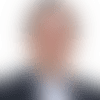For all the ways COVID-19 impacted the back end of the NFL draft process in the spring, from the ceasing of pro day workouts to the cancellation of its Las Vegas venue in favor of a one-of-a-kind virtual broadcast, it stands to shake up the front end of the 2021 draft cycle in a number of ways.
In fact, where scouting is concerned, it already has.
As colleges grapple with the challenges of navigating a football season through a pandemic, scouts find themselves without key information on top prospects for 2021 that they normally already would have by this point in the summer. And the very nature of a scout's job -- specifically, the occupational routine of heavy travel -- could potentially place them in a deeper level of protocol for access to college campuses this fall.
Scouts go from school to school to see draft prospects throughout the season, requiring frequent hotel stays, occasional plane trips, and this year, passing through states and jurisdictions that will have varying COVID-19 caseloads and public advisories. That could put schools on a higher alert for a scout's visit as opposed to, for instance, a regular student or a local vendor.
University of Memphis Director of Athletics Laird Veatch anticipates scouts falling under broader policies that apply to all visitors to the school's athletic facilities, but also perhaps a narrower policy covering higher-risk visitors, as well.
"I think that's very possible, simply because of the travel component. If you look at it based on the concerns as of today (June), that's one of the red flags, if someone's been traveling via airplane or traveling a great deal, that's viewed as higher risk," said Veatch, whose school has had 11 players selected in the past six drafts, including four on the event's first two days. "So that would have to be considered. Now, what that looks like in a couple months, it could change. But as of now, that's a concern we'd have to consider."
At the University of Alabama, Director of Athletics Greg Byrne said the question of whether scouts will require tougher screening hasn't yet been discussed.
"We haven't talked about it in that manner," Byrne said. "That makes sense, but we just haven't talked about it at this point."
Given the fluid nature of policymaking during a pandemic, access for scouts could look different from month to month, if not week to week. The health of student-athletes is rightly the primary concern for athletic directors, and the resumption of voluntary workouts already has been problematic for schools. Last week, the University of Houston suspended workouts following a spike in cases in the Houston area and six positive tests among student-athletes. Kansas State announced a pause on its voluntary workouts Saturday after 14 student-athletes tested positive for COVID-19.
That makes a policy on NFL scouts, at this point, highly speculative -- but they are bracing for changes.
"There is no way they are going to let us in like it's always been before. It's bound to be different in some ways," said an AFC scout who is unauthorized to speak on his club's behalf and therefore requested anonymity. "People are talking about how this year's draft was unprecedented, but in terms of evaluations, next year's could be unprecedented, too. Because at this point, we don't know if all the scheduled games will even be played."
At Alabama, where scouts flock to an annual display of top draft prospects and normally enjoy a level of access reputed to be high compared with other schools, Byrne said policies on fall visitors to athletic facilities, including scouts, will be discussed in the coming weeks.
"We're being fairly aggressive with testing, we're doing contact tracing, screening," he said. "Some or potentially all of those, depending upon where we are, could be part of what scouts are involved in."
Those discussions will not only address scouts' mid-week access to practices and staff, but game-day access as well. Many scouts prefer to be on the sidelines during pre-game warmups to get a closer look at draft prospects, something Byrne said is among the levels of access under consideration.
"Who will be allowed on sidelines on game days, pregame, during the game, postgame? What does attendance look like? Our goal has still been to have a fairly full stadium," Byrne said. "But we're still saying that here in June. The bigger statement is what we can say at the end of July, end of August."
Byrne emphasized that administrative decisions and policies could need to evolve over time as the circumstances of the virus demand, a point echoed by Veatch.
"We're all interested in trying to support (scouting) efforts because we want that exposure for our players," said Veatch. "We'll work hard to provide some level of access, but it's certainly going to look different. There will be, obviously, safety protocols and steps that will have to happen. It will have to be regimented and it might not be as efficient."
Of more immediate concern from a scouting perspective was the absence of access to college underclassmen that weren't eligible for the draft this spring. Since 2017, under an agreement between the NFL and the American Football Coaches Association, NFL scouts have been permitted to begin gathering information on select returning underclassmen with measurements, timing tests and interviews. Typically, these are scouts' first impressions of elite prospects, and are conducted when teams visit campuses for spring pro day workouts. Scouts consider this an invaluable foundation for their fall evaluations.

For example, in the spring of 2019, Alabama WR Henry Ruggs III ran a blistering 4.25-second 40-yard dash for scouts at his underclassman workout, prior to his junior season. That very clocking not only raised Ruggs' draft profile, it's a key reason he was identified as the 2020 NFL Scouting Combine's biggest threat to challenge the event's 40-yard dash record of 4.22. Ruggs, true to form, clocked a 4.27 at the combine, the best time of the event, and was subsequently drafted No. 12 overall by the Las Vegas Raiders.
With prospects for the 2021 draft unable to perform for scouts at all in the spring, key boxes on evaluation forms are blank.
"That's vital info as far as putting together a schedule of travel if you're a scout," said Senior Bowl executive director Jim Nagy, who was an NFL scout for 18 years.
If scouts are unable to interview college staffers face to face as they normally would, videoconferencing and phone calls could rule the day, perhaps even videoconferencing with large groups of scouts at a time. That would be tougher on younger scouts who haven't built relationships as strongly as veteran scouts, according to Nagy.
"During a game week, they're not calling back 32 teams if scouts have to do it that way. They'll pick and choose who they respond to," Nagy said. "If I'm Ohio State or Alabama or Clemson, you know everyone's going to want to know about certain guys. Maybe you set up a conference call with scouts and (an assistant) coach at 9 a.m. on a Monday morning, for maybe 20 minutes, somebody else for another 20 minutes, and so on. And all 32 teams can get on, but that might be your only crack at him."
Another aspect of the draft process unaffected in the last draft but potentially facing a new reality for the coming draft is training for the combine.
Former NFL wide receiver Yo Murphy, who operates an athletic training business in Tampa, Florida, generally draws about 20 draft prospects to train for the combine each winter. Normally, they would rotate in two groups of 10, splitting up linemen from skill-position players. But in training athletes for other sports since the coronavirus pandemic took hold, Murphy has realized his business could look anything but normal when his trainees for the 2021 combine start showing up in December.
"Training wise, it could change the way you train forever, or at least until there's a vaccine," Murphy said.
Pride Gym, where he operates Yo Murphy Performance, isn't large enough to achieve social distancing between training athletes. It's a space of about 10,000 square feet, and Murphy has already had to rent a second facility with another 5,000 square feet just to keep athletes apart at a safer distance.
He and other combine trainers must be prepared to break players into smaller groups and rotate them over more extended hours. Overseeing more groups means having to hire more staff, Murphy said, and the expense of professionally cleaning the facilities has risen as well. All that will drive up the cost of combine training for athletes next winter, a cost that is typically fronted by agents but eventually borne by draft prospects themselves. Murphy said he'll try to eat as much of the extra cost as he can.
Paramount for all involved, however, will be the health of the athletes. Murphy points out how the aforementioned star of the 2020 combine could have been compromised had he waited to enter the draft in 2021 instead.
"We had Henry Ruggs (in training) this year," Murphy said. "If he was coming to us next year and someone (in his training group) came down with COVID a week before the combine, that whole group might be done for the combine."
Follow Chase Goodbread on Twitter @ChaseGoodbread.













